
While the Financial sector has enjoyed a rally with the broader market, relative performance has not been compelling as the continued flattening of the yield curve keeps the ratio pinned to the mat. Industry group performance remains a mixed bag, with Bank and Insurance struggling on a relative basis while Capital Markets continue to maintain their outperformance vs. the sector. Breadth in the space has received a positive boost in the percentage of stocks with strong momentum, but will it be enough to turn the tide of underperformance for the sector?
S&P 500 Financials
Like many groups, the Financials have held support at the pre-COVID, rallied through the 50-day moving average, and now have a test near the declining 200-day moving average. Getting above 590 and the 200-day moving average are requirements for the bulls to take control of the trend, which has been improving along with the broader market.
Relative to the S&P 500:
On a relative basis, the group remains under pressure despite some near-term improvement that has brought the ratio to the underside of resistance and the declining 50-day moving average. It is still hard to make a compelling case for leadership here.
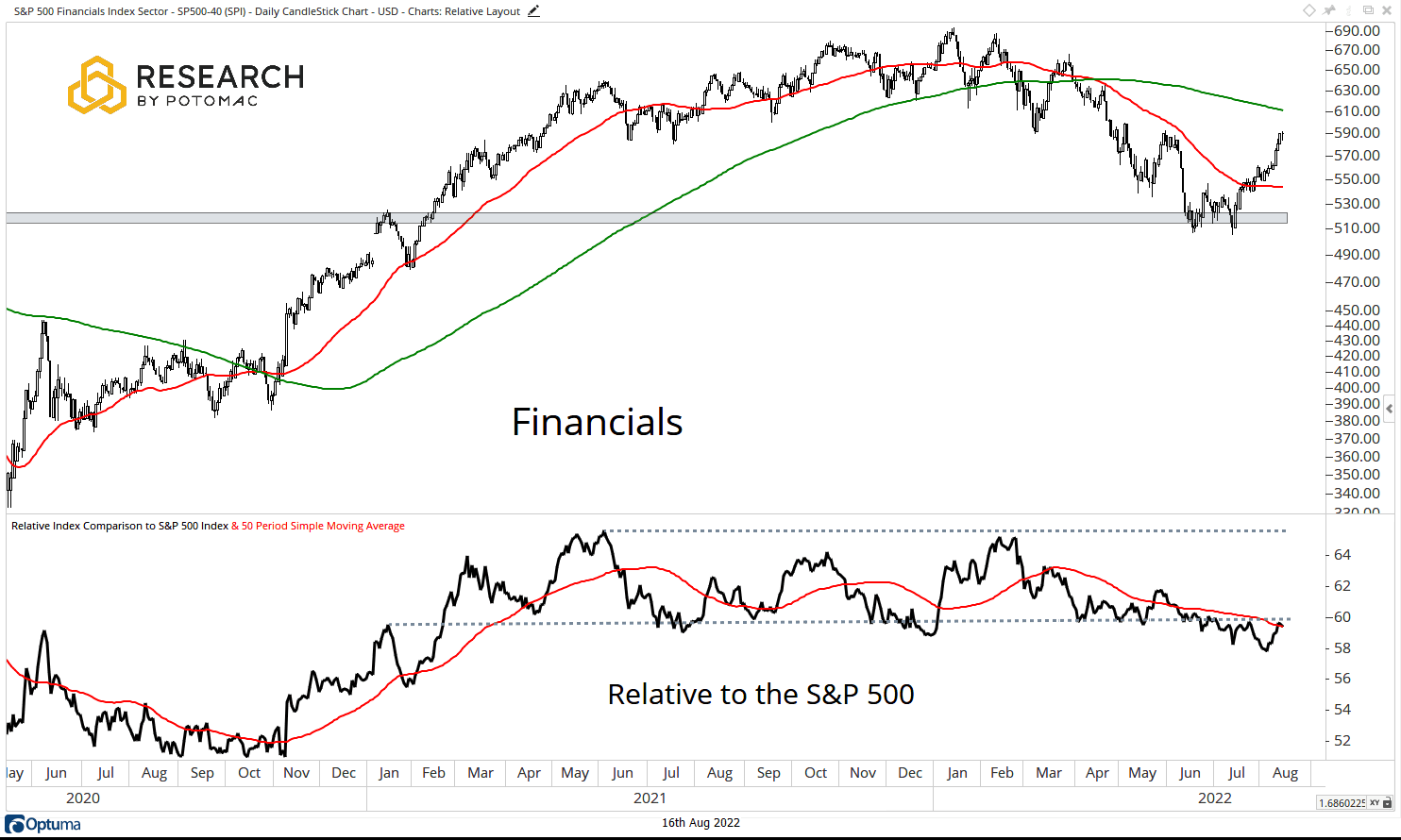
In our last note, we made the case that the flattening yield curve would make it hard for the Financials to gain much traction on a relative basis. That thesis continues to play out.
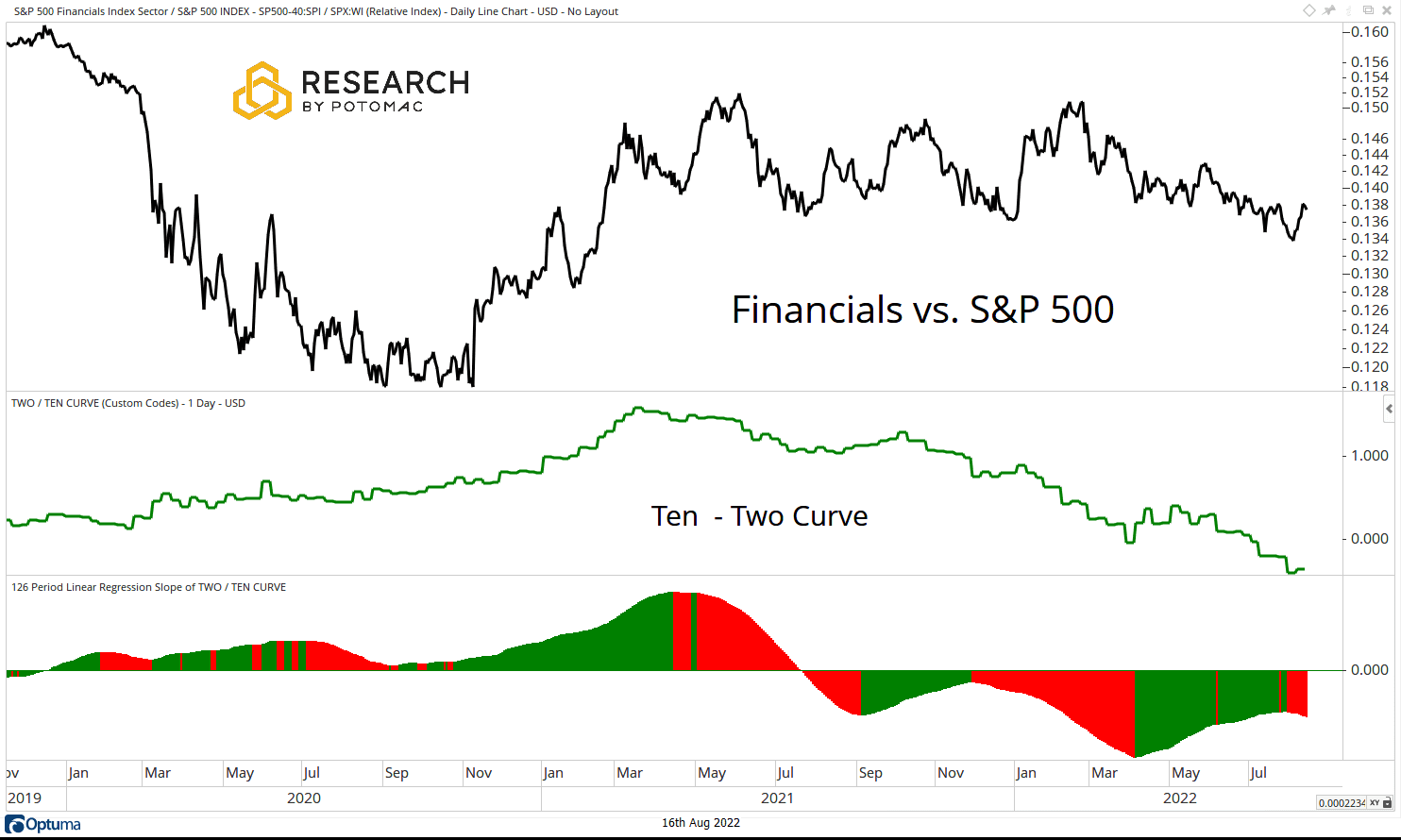
We will define a flattening curve as when the six-month slope of the 10Y – 2Y yields falls below zero. Looking at data from 1990, then the curve is flattening, and the odds of outperformance on the part of Financials over the next three months is 43.56%. The group sees median underperformance of 0.75% and mean underperformance of 1.15% over that timeframe.
Industry Trends
Banks have enjoyed a rally from recent lows along with the rest of the market, but we are hard pressed to make an overly compelling bullish case here. The group is above the 50-day moving average but remains below resistance at the pre-COVID peak.
Relative to the broader financial sector, the group remains in a bearish trend, below the 50-day moving average as the flattening curve keeps the ratio pinned to the floor.
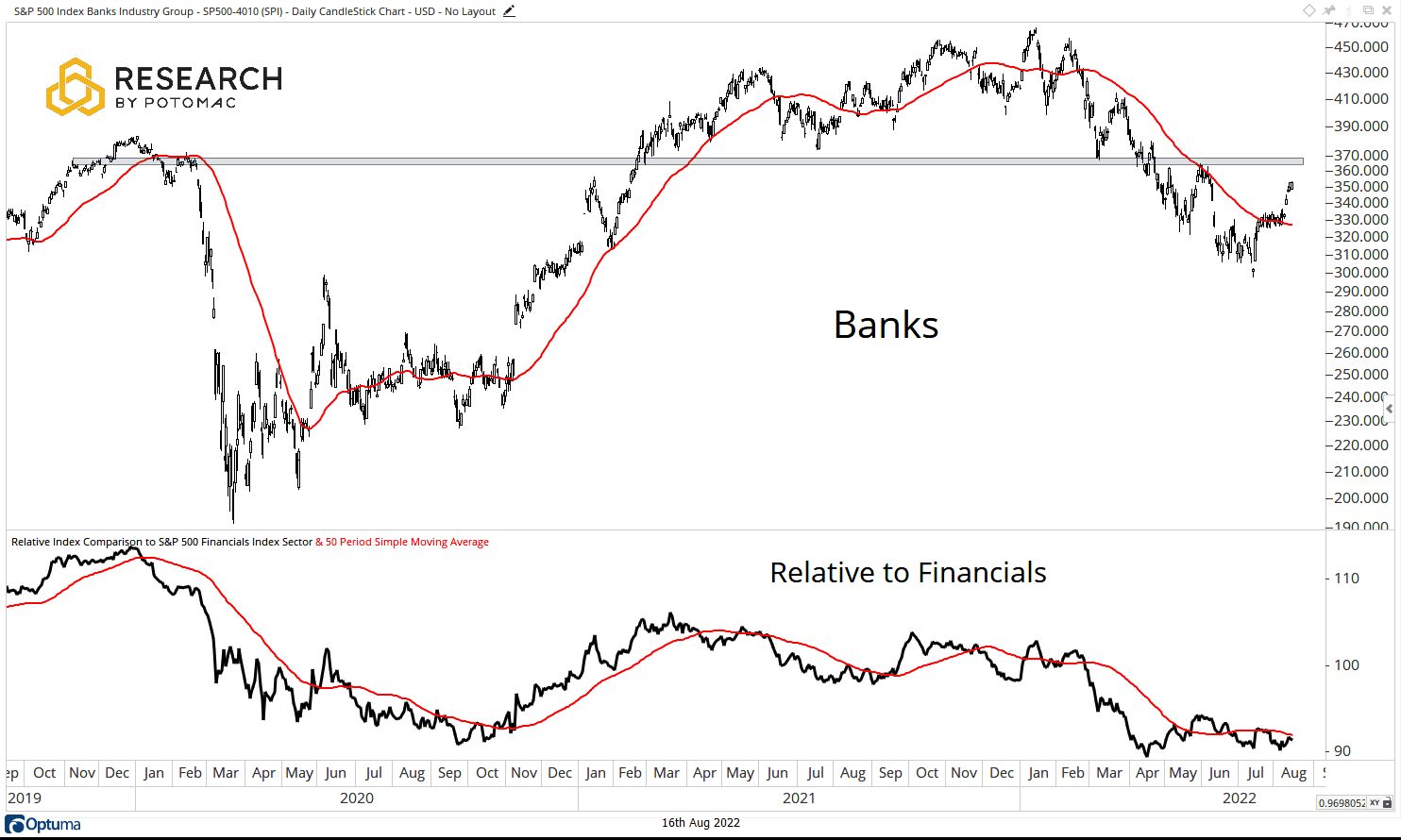
While it is hard to make a compelling case for the banks overall, within the group, Regional Banks have seen much more improvement than their Large Cap peers over the past month. The Regionals have recaptured their pre-COVID peak, while the Large Caps still have a lot of work to do.
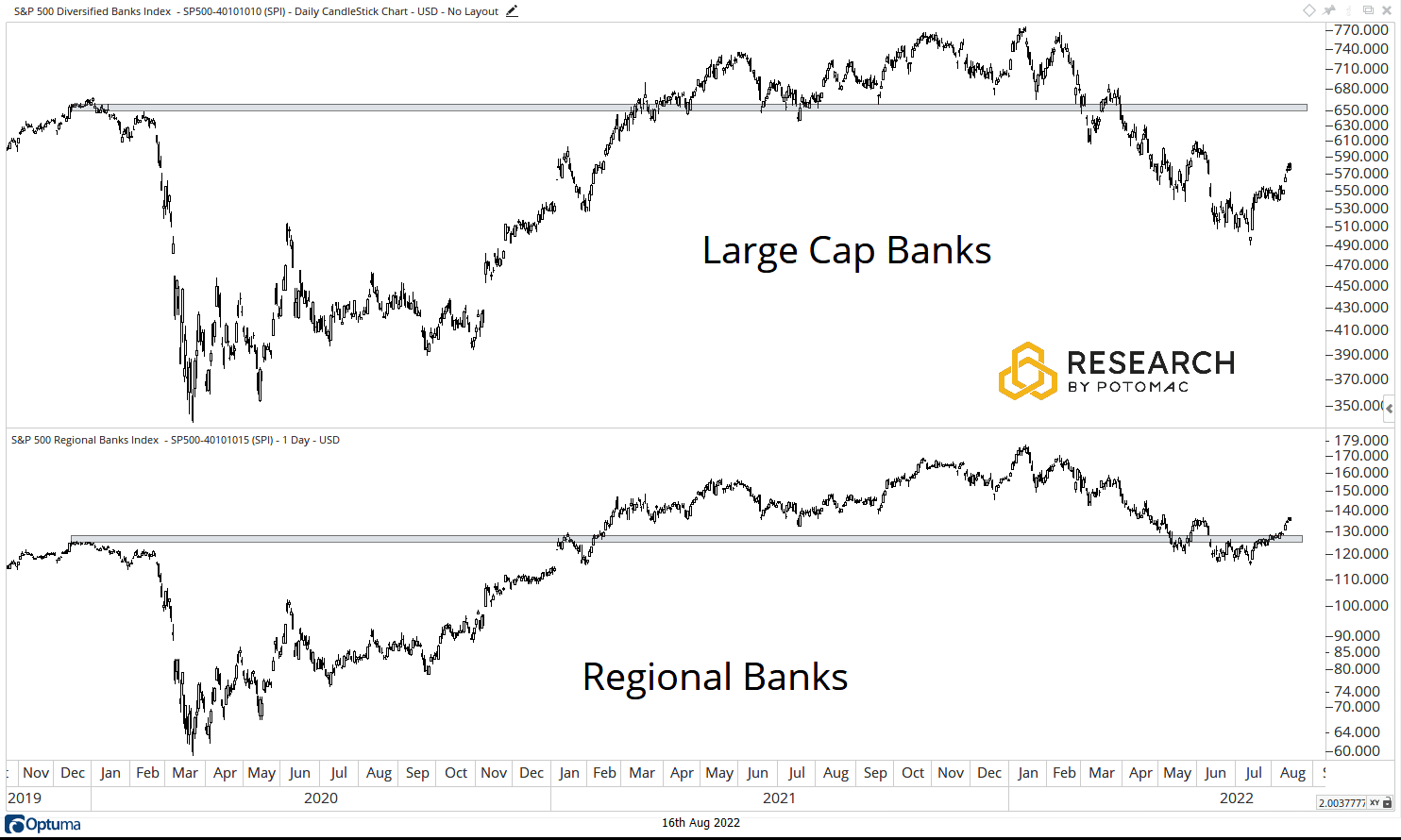
Capital Markets stocks have seen a nice rally from support through the 50-day moving average. The bulls are beginning to take control, opening the door to a move toward the late 2021 highs.
Relative to Financials, the group has broken above the 50-day moving average and price-based resistance. Above these levels, odds favor continued outperformance.
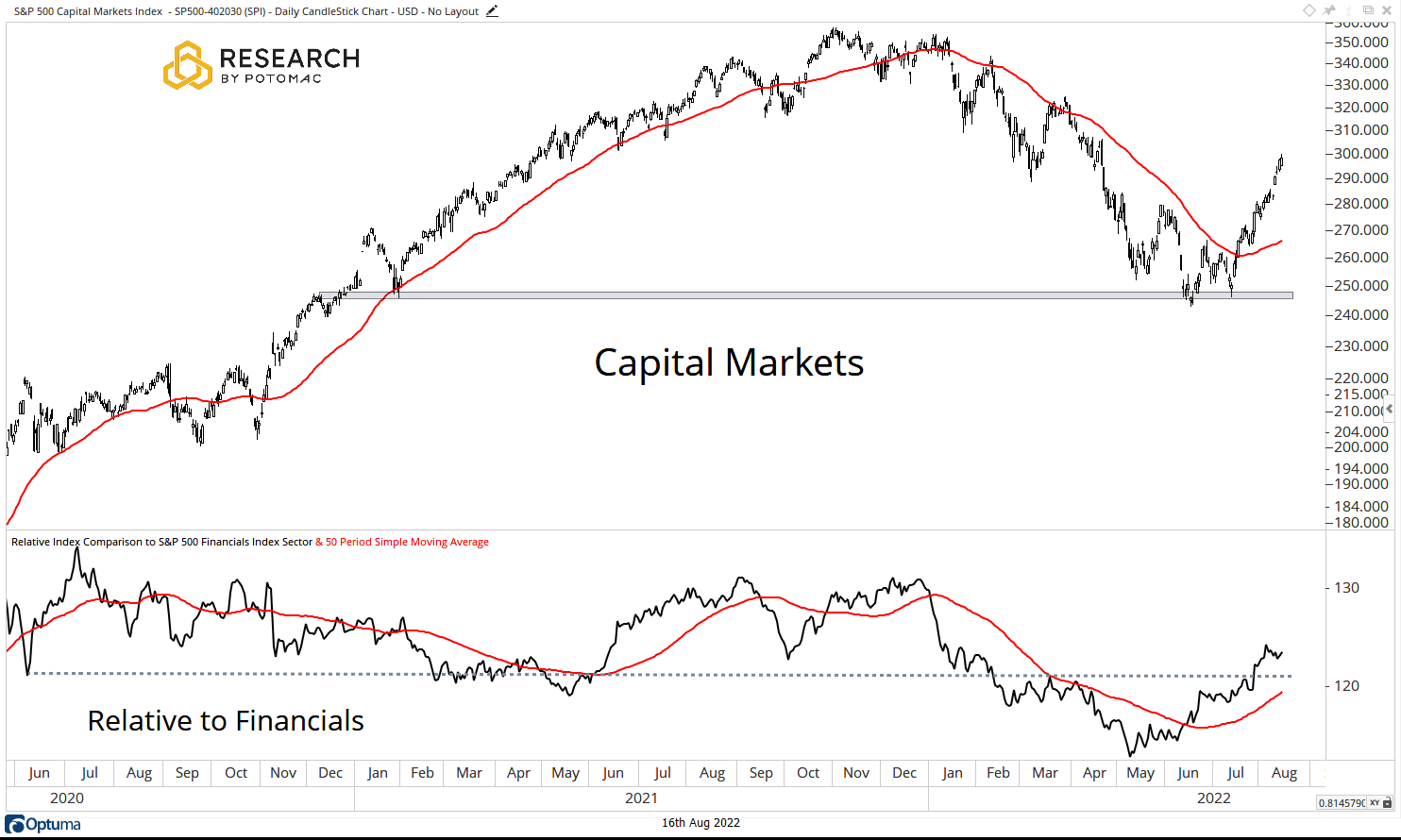
Insurance remains a compelling absolute trend in the near term, and that trend should become stronger with a move above the 575 level. The 50-day moving average is beginning to turn higher above price-based support.
The relative trend has begun to stall and has moved below the 50-day moving average, making it an inline performer.
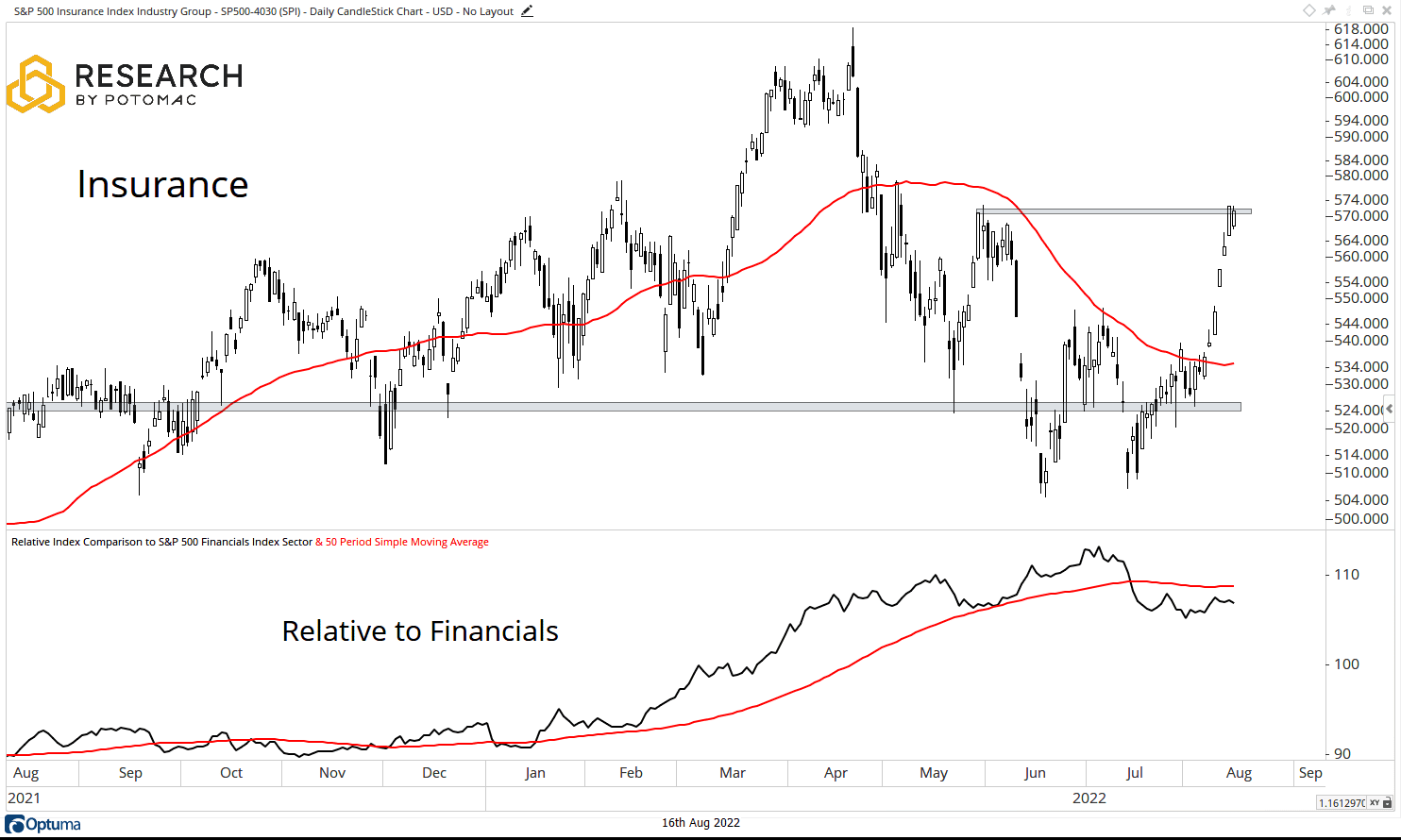
Breadth
As the sector has rallied in recent weeks, the percentage of Financials components with an overbought momentum reading (RSI > 70) is now greater than the 30% mark for the first time since January of this year. There were 156 instances since 2003 where the percentage of Financials components with an overbought reading was greater than the 30% mark for a median gain in the sector of 2.30% with a 68.18%-win rate over the following quarter. It’s worth noting that median gains have tended to peak 52 trading days out at 3.43% on a slightly reduced 66.23%-win rate, so consideration should be given to hold times.
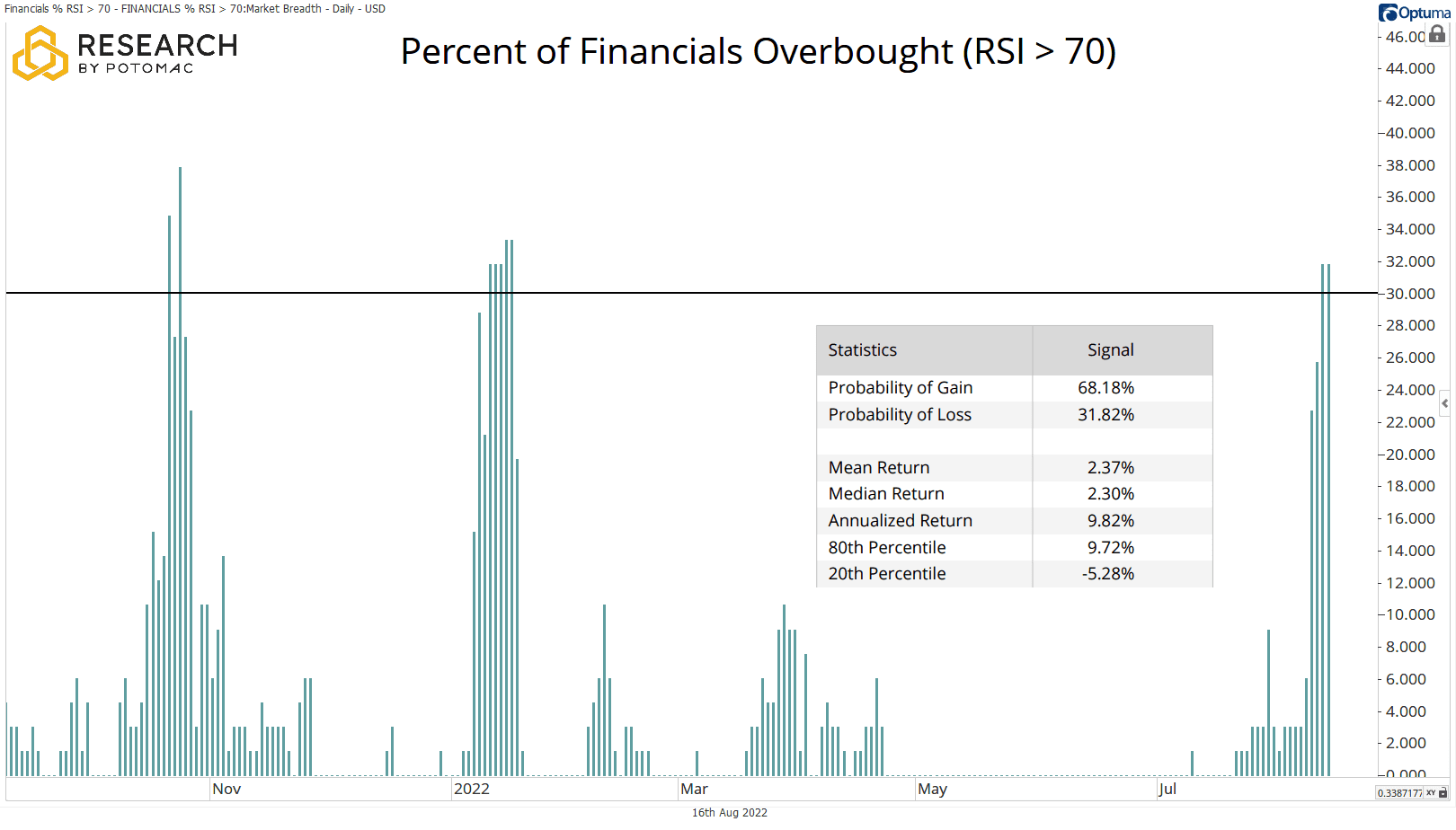
This note is a preview of our Sector Deep Dive.
Disclosure: This information is prepared for general information only and should not be considered as individual investment advice nor as a solicitation to buy or offer to sell any securities. This material does not constitute any representation as to the suitability or appropriateness of any investment advisory program or security. Please visit our FULL DISCLOSURE page.
